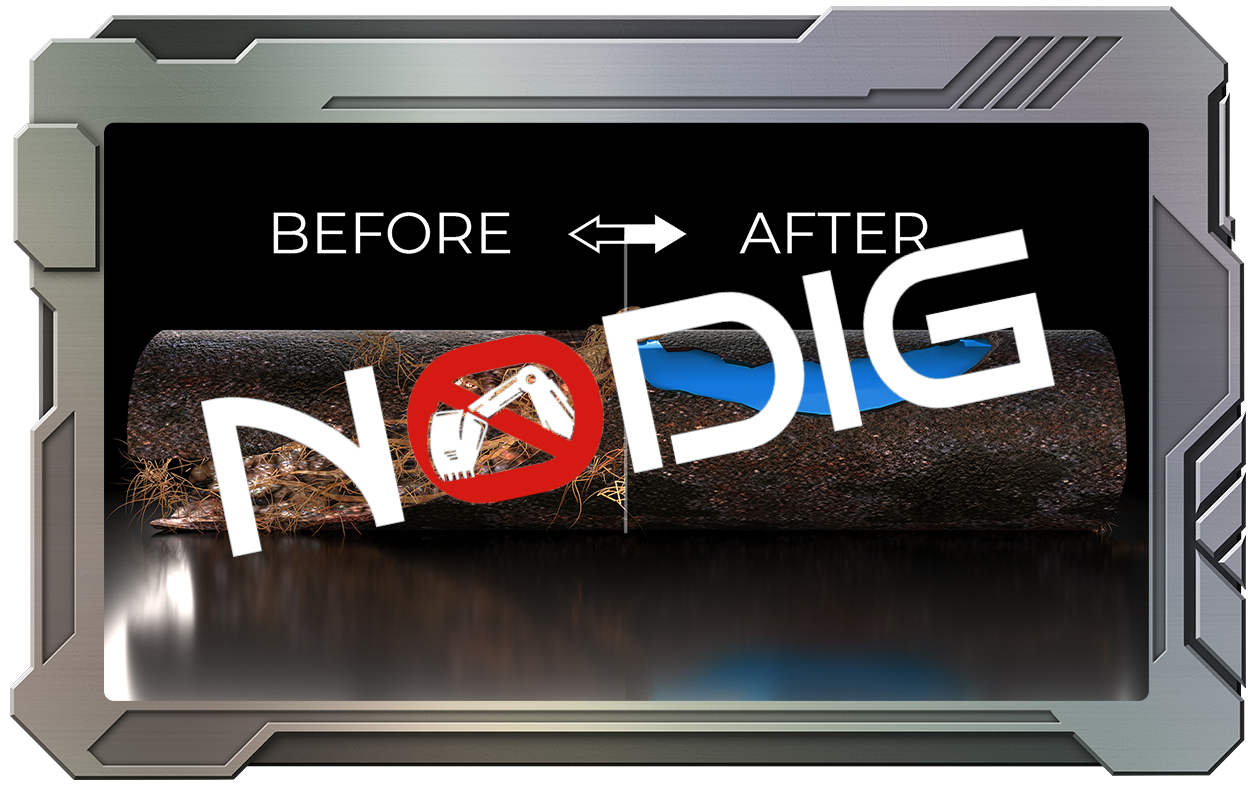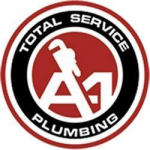If you want to seal leaks or perform structural renovation, your first choice may be the most cost-effective rehabilitation method available.
Slip lining is the oldest and simplest considered trenchless pipe repair.
It is where a new pipeline is either pulled or pushed into an existing host pipe starting at the insertion pit. The new pipe typically has an outer diameter smaller than the internal diameter of the host pipe.
We will describe methods of slip lining further for you to understand it better. Below is how you can provide additional rigidity using slip-lining materials of either continuous pipes or discrete pipes.
What Is Sliplining?
This trenchless method is a cost-effective rehabilitation method to restore the structural integrity of an existing pipeline. It is low-cost, fast, and simple to do.
As mentioned, one of the oldest trenchless technologies is sliplining. This is used to describe methods of lining with either continuous pipes or discrete pipes.
It involves installing a smaller pipe into an existing pipe, grouting the annular space between the two pipes, and sealing the ends.
The inserted pipe is called the carrier pipe. On the other hand, the existing pipe is called the host pipe. The resulting pipe will have a reduced cross-sectional area. This changes the flow rate and the capacity of the new pipe.
Sliplining is used for the structural renovation of pipes that do not involve large obstructions or sharp bends. The insertion of the carrier pipe and the grouting of the annular space provide additional rigidity to seal leaks.
The common material used when it comes to lining materials is high-density polyethylene (HDPE), polyurethane (PE), and polyvinyl (PVS). HDPE pipe lining usually maximizes the final internal diameter of the new pipe.
Continuous Sliplining
The most common material for continuous sliplining is HDPE pipe. It involves inserting a long HDPE pipe that is fused before the installation.
This process entails pulling the HDPE pipe through an existing host pipe starting at an insertion pit. This continues up to the receiving pit.
Either one or both of the insertion pit and the receiving pit can be an existing access point if the diameter and material of the HDPE pipe can work in the existing facilities.
This can accommodate long distances of up to 5,000 feet.
Segmental Sliplining
Segmental sliplining uses bell-and-spigot pipes like fiberglass reinforced pipes (FRP), polyvinyl chloride (PVC), HDPE pipes, or spirally-welded steel pipes. It involves inserting individual pieces of these pipes.
Each of the individual pipes is lowered into position and involves pushing the pipes together and along the existing pipe diameter.
Note that it requires the help of machinery to keep the segments in place. This is commonly used for glass-reinforced pipe (GRP) liners.
How Does the Sliplining Process Work?
The sliplining process may differ depending on the extent of the structural renovation. Field conditions, pipe materials, and host pipe conditions are some factors that may change the process.
However, the general sliplining process involves the following steps:
Step 1: Preparation of Pipes
The first step of the sliplining process involves preparing your host pipe and your carrier pipe:
- Inspect your host pipe first. The preferred method is to use remote-controlled CCTV equipment.
- Next, clean the existing pipelines. The host pipe should be clear of obstructions and service connections so that the carrier pipe can easily be installed.
- It is now time to prepare your carrier pipe. For continuous sliplining, you need to join many pipes together, usually through butt fusion technology. For segmental sliplining, you can use bell and spigot pipe types.
Step 2: Pipe Installation
You must first create the excavate entry and exit pits to access your host pipe. Then, push or pull the carrier pipe into the host pipe to install.
In some instances, the two pipes may need a 24-hour rest period to set.
Step 3: Restoration of Terminal Connections and Grouting of Annular Space
Once your pipes are in place, restore the connections at the ends of the carrier pipe and grout the annular space around it. This will stabilize the new liner and prevent leakage.
It is best to observe the performance of the new parts for a few days to ensure that everything is good.
The Benefits of Sliplining
Sliplining is the oldest trenchless method for pipe repair. The following are the reasons why it continues to be used up to today:
- Low-Cost - Sliplining is much less expensive than a complete pipe replacement.
- Efficient - The method is fast and easy. Operations can be back up and running within a short amount of time.
- Less Intrusive - The entire process requires minimal excavation, disruption, waste, and cleanup. There is less work to be performed.
- Long-term - Sliplining has a lasting effect. It can prevent corrosion and leakage for many years.
When Should You Do Sliplining?
Sliplining is commonly used for straight applications. Pipes with significant bends and those of unusual size are NOT applicable for sliplining.
The method is mainly used in the gas industry, water lines, sewage systems, and some rehabilitation purposes.
Frequently Asked Questions
Sliplining involves inserting a premade pipe inside your other pipe. A premade one is less flexible than a custom-size felt liner.
Pipes of unusual size or those with large obstructions and sharp bends may pose difficulty in sliplining.
Another disadvantage of sliplining is the resulting reduced cross-sectional area of your old pipe.
Grouting allows only one solid line from your old pipe to your new opening. This drastically reduces the workable space that many industrial sites may not want to give up.
Another form of trenchless technology is cured-in-place pipe lining or CIPP lining. It is a flexible process that is more modern and keeps your pipes closer to their original size.
The CIPP lining is a flexible felt liner soaked in a mixture of epoxy resin. As such, it can adapt to the shape of your host pipe, especially if it is no longer perfectly round.
The lining forces hot air through the pipe as it easily hardens into a brand-new pipe.
CIPP technology can work in smaller access ports of installation. It also results in a strong pipe with a much thinner lining.
Final Thoughts
Sliplining is a tested and simple trenchless method of pipe repair. It involves only inserting a small pipe into an existing one and grouting the annular space to restore structural integrity.
However, modernity has highlighted the limitations of this method. Its ease and cost-effectivity should not prevail over the practicality of other better options available.
Choose the more practical option depending on the pipe repair you are dealing with.
It's great to be listed on NoDig
-
Join a network of verified sewer repair specialists
-
Get recognized
-
Update your business information
Unlock your listing in minutes.






